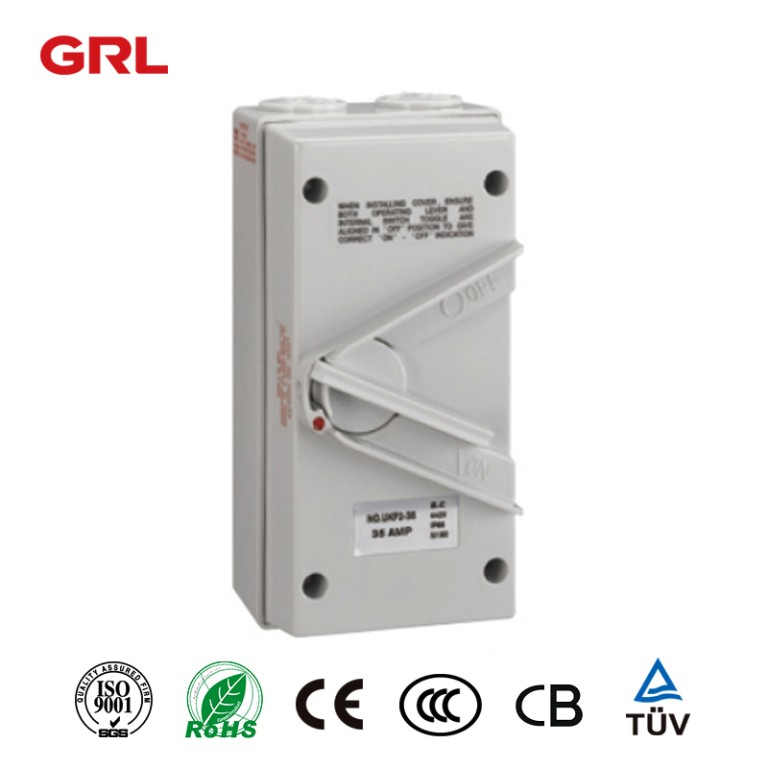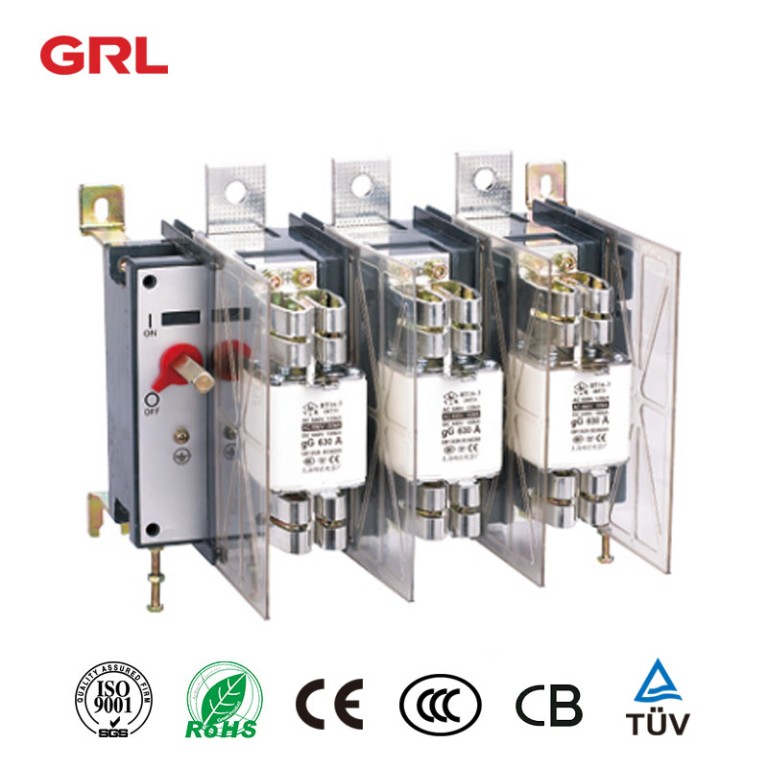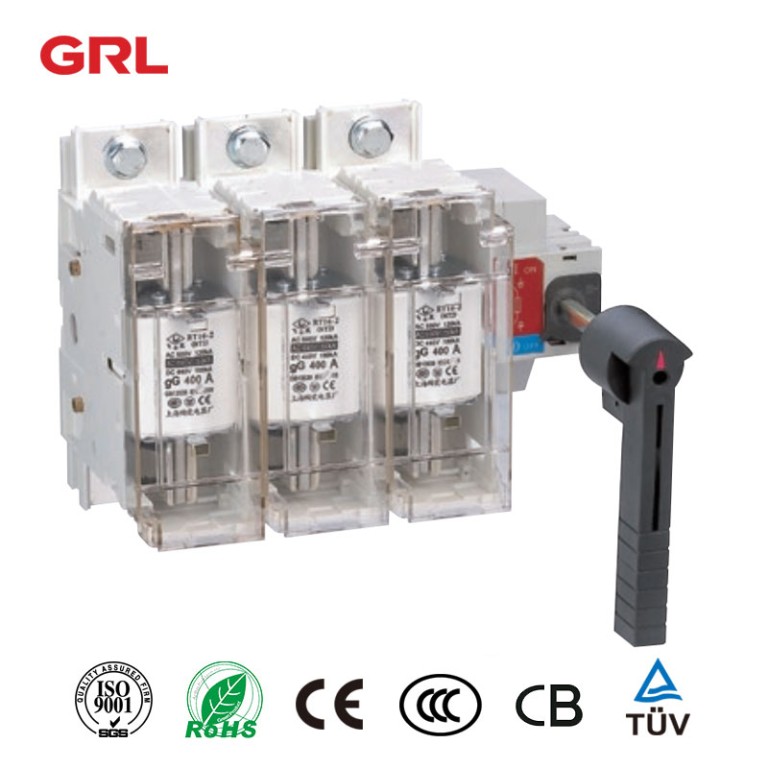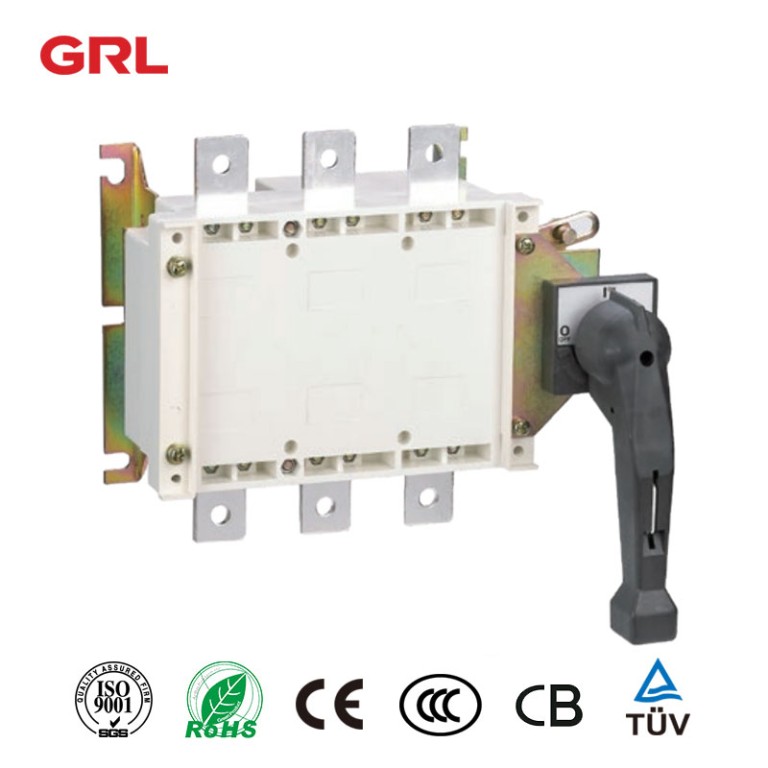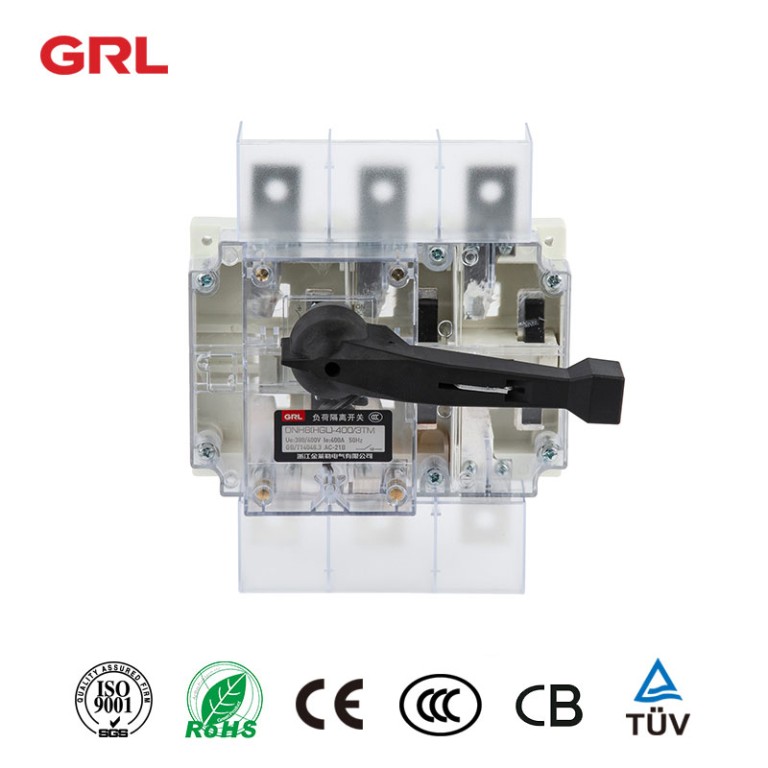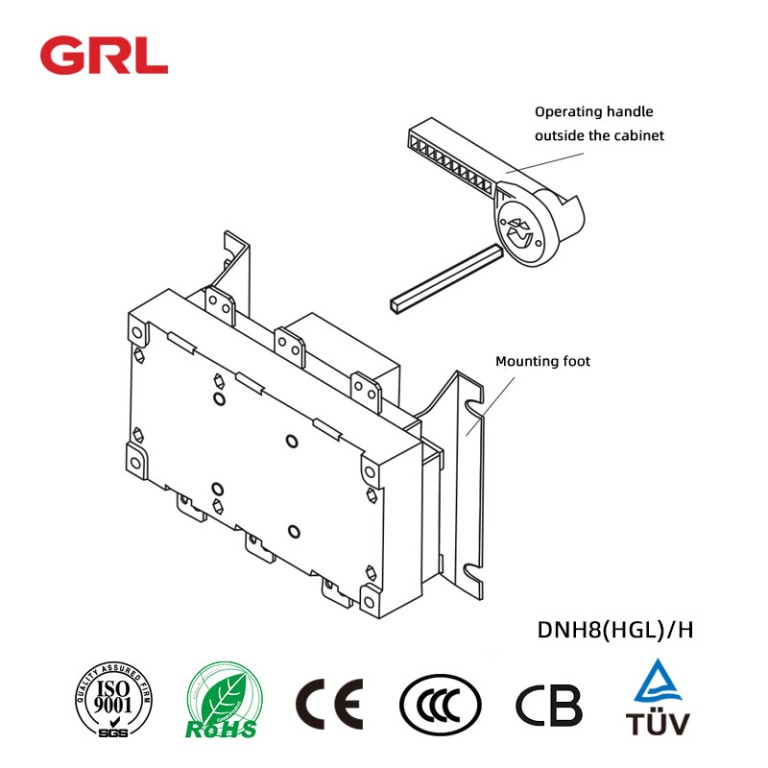The DNH40 series isolator switches are designed for various applications, ensuring electrical isolation and infrequent circuit connection and disconnection. These switches are compliant with GB/T 14048.1 and GB/T 14048.3 standards, making them reliable choices for machinery, distribution, switchgear, motor control centers, and photovoltaic systems.
Isolator Switches Feature
1、Modular Design
The DNH40 series features a modular structure that can be assembled according to customer requirements.
2、Durable Construction
The switch housing is made of glass fiber-reinforced unsaturated polyester resin, offering excellent flame-retardant properties, dielectric performance, anti-carbonization, and impact resistance.
3、Efficient Operating Mechanism
Equipped with a double spring energy storage mechanism, the switch allows instantaneous release of the spring during operation, ensuring quick connection and disconnection. This mechanism is independent of the operating handle speed, significantly enhancing the switching capabilities.
4、Rotary Contact Structure
The rotary multi-breakpoint contact structure ensures a safe isolation distance, meeting the reliable isolation requirements.
5、Visual Indicator
The position of the moving contact is visible through a window, providing a higher level of safety.
6、Clear Status Indication
The switch features a clear ON/OFF indicator. When in the “O” position, the handle can be locked to prevent accidental operation.
Isolator Switches Application
1、Machinery and Equipment
Suitable for machinery that requires infrequent connection and disconnection of circuits. The reliable isolation ensures safety during maintenance and operation.
2、Distribution Systems
Used in electrical distribution systems to isolate different sections for maintenance or in case of a fault. Ensures the safety of personnel and equipment.
3、Switchgear and Control Panels
Integral to switchgear and control panels for safe isolation of circuits. Ensures that operators can safely work on electrical panels without the risk of electric shock.
4、Motor Control Centers
Provides isolation for motor control circuits, allowing safe maintenance and operation. Essential in industrial environments where motor control is critical.
5、Photovoltaic Systems
Used in photovoltaic systems to isolate parts of the system for maintenance, ensuring safety and reliability in renewable energy setups.
What are isolator switches and what are they used for?
Isolator switches, also known as disconnectors or disconnect switches, are primarily used to ensure that an electrical circuit is completely de-energized for service or maintenance. These switches are used in residential, commercial, and industrial settings to isolate parts of the AC electrical system for maintenance, safety, and operational flexibility. They are designed to ensure safe disconnection without arcing or electrical faults.
These switches include safety features such as lockable handles, visible indicators, and robust insulation to ensure safe operation and maintenance. They are suitable for a variety of applications: in residential areas, they are used in electrical panels to isolate circuits for safety during electrical work; in commercial buildings, they are part of building management systems to control and isolate electrical circuits in different sections of the building; and in industrial environments, they are essential for isolating machinery, equipment, and sections of the electrical network for maintenance and safety.
They play a crucial role in electrical systems.
First, isolator switches ensure safety by creating a visible break in the circuit, preventing accidental contact with live parts during maintenance.
Second, they facilitate maintenance by allowing personnel to safely access electrical equipment with the assurance that the power is completely cut off from the section being serviced.
Third, they protect equipment and personnel by disconnecting faulty sections of the circuit, thus preventing electrical accidents and damage to the system.
Fourth, isolator switches enable the isolation of parts of the electrical system for various operational needs, such as fault detection and rectification.
Lastly, industrial and commercial setups, provide operational flexibility by allowing different sections of the electrical network to be controlled independently.
Installation Guidelines
Ensure the switch is intact and operates flexibly before installation. It should be installed vertically and checked for nameplate compliance with usage requirements. The switch should be in the OFF position during installation.
When wiring, the switch terminals and bare busbars should be insulated to prevent short circuits; ensure that the extended shaft is coaxial with the handle hole to avoid damage to internal components.
Maintenance
Inspect the switch every six months. If the rotating parts are not flexible, apply lubricant (MP-3 grease recommended). Check for loose fasteners and repair them as necessary. Discontinue use if severely damaged.
Recommended Products
leave your question
GRL Electric Co., Ltd. is one of the leading companies in the Middle And High End market of low-voltage electric in China












